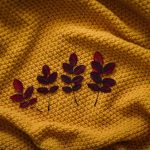Do you ever wonder what makes certain fabrics have a unique, subtle color effect? Have you heard of cationic fabric? This type of fabric is gaining popularity in the textile industry due to its unique coloring and durability.
Let’s dive into what cationic fabric is and how it is made. Cationic fabric is a type of textile that is created by dyeing the yarn with two different colors. One color is positively charged, while the other is negatively charged. These two colors are then blended together, resulting in a fabric with a subtle heathered effect.
This coloring method also allows for a wider range of color options, as the two colors can be mixed in varying ratios to create different shades. Now that you have a basic understanding of cationic fabric, let’s explore its production process and benefits.
Table of Contents
Definition of Cationic Fabric
You’re going to love cationic fabric – it’s a type of material that has been dyed using two different colors, resulting in a unique and eye-catching look.
The process involves using a special dyeing technique where the fibers of the fabric are spun together with two different colored yarns. This creates a subtle blend of colors that is different from other fabrics that are simply printed with a design.
Cationic fabric is not only visually appealing, but it also has some practical benefits. The two different colors used to dye the fabric actually help to enhance its durability. This is because the two different colors create a strong bond between the fibers, making it less susceptible to wear and tear. Additionally, the fabric is also resistant to fading, making it an ideal choice for items that will be exposed to sunlight.
There are many different applications for cationic fabric, including clothing, upholstery, and even outdoor gear. It’s a versatile material that can be used in a variety of ways to create a unique and stylish look.
So whether you’re looking to create a bold fashion statement or simply want a durable and long-lasting fabric, cationic fabric is definitely worth considering.
How Cationic Fabric is Made
To create cationic fabric, manufacturers typically start by blending two or more different types of synthetic fibers. These fibers are usually polyester and nylon, but other options may be used as well. The fibers are then dyed using a special process that gives the fabric its unique appearance and properties.
The dyeing process involves adding a cationic dye to the fibers. This type of dye has a positive charge, which allows it to bond with the negatively charged fibers. The dye is then heated and the fibers are left to cool, which causes the dye to become fixed in the fabric. This creates a color that is both vibrant and long-lasting.
Creating cationic fabric is a complex process that requires specialized machinery and expertise. However, the end result is a material that is both beautiful and durable.
Whether you’re looking for a vibrant dress or a sturdy backpack, cationic fabric is a great choice that is sure to meet your needs.
Here are 4 reasons why you might choose cationic fabric:
- The unique dyeing process creates a color that is both vibrant and long-lasting.
- Cationic fabric is usually made from synthetic fibers, which are known for their durability and resistance to wear and tear.
- This type of fabric is often used in outdoor gear, such as backpacks and tents, because of its ability to stand up to harsh weather conditions.
- Cationic fabric is also a great choice for clothing, as it can be made to feel soft and comfortable against the skin.
Durability and Resistance to Fading
When it comes to durability and resistance to fading, cationic fabric has a lot of advantages over traditional dyeing methods. This is especially important for athletic and outdoor apparel, where garments are exposed to harsh conditions and need to withstand frequent washing.
Cationic fabric’s longevity means you can enjoy your favorite activewear for longer, without worrying about it losing its color or shape.
Comparison to Traditional Dyeing Methods
Compared to traditional dyeing methods, cationic fabric offers a more environmentally friendly option with reduced water usage and chemical waste. Traditional dyeing methods require large amounts of water to rinse out excess dye, which can lead to water pollution and waste.
In contrast, cationic dyeing uses a special dye that bonds directly to the fabric fibers, reducing the need for excessive rinsing and water usage. Moreover, traditional dyeing methods often require harsh chemicals to achieve the desired color and can result in chemical waste that can harm the environment.
Cationic dyeing, on the other hand, uses a special dye that is designed to work with the fabric’s electrical charge, creating a more sustainable and eco-friendly option. By choosing cationic fabric, you can not only enjoy the benefits of a durable and long-lasting material, but you can also feel good about making a more environmentally conscious choice.
Importance for Athletic and Outdoor Apparel
Athletic and outdoor enthusiasts can now enjoy eco-friendly apparel that not only performs well but also reduces water usage and chemical waste. Cationic fabric has become an essential material in creating sustainable athletic and outdoor apparel.
It’s a fabric that is dyed using a special technique that uses less water and chemicals compared to traditional dyeing methods. Cationic fabric is highly breathable and moisture-wicking, making it perfect for athletic and outdoor activities.
It’s also lightweight and comfortable to wear, allowing freedom of movement. Additionally, cationic fabric is durable and resistant to wear and tear, making it ideal for outdoor apparel that will be subjected to harsh conditions.
With the increasing concern for the environment, cationic fabric has become a popular choice for athletes and outdoor enthusiasts who prioritize sustainability without sacrificing performance.
Longevity of Cationic Fabric
You can imagine yourself wearing your favorite eco-friendly athletic or outdoor apparel made from this special kind of dyed material for years to come. Cationic fabric is known for its longevity and durability, which makes it a popular choice for manufacturers who want to create high-quality products that can withstand the test of time.
If you’re looking for a fabric that won’t fade or lose its shape after several washes, cationic fabric is the way to go. This fabric is made using a special dyeing process that ensures the color remains vibrant even after prolonged use. To give you an idea of just how long-lasting this fabric is, take a look at the table below.
| Fabric Type | Average Lifespan |
|---|---|
| Cationic | 5+ years |
| Regular Dye | 2-3 years |
| Sublimation | 1-2 years |
As you can see, cationic fabric outperforms regular dye and sublimation in terms of longevity. This means that you won’t have to replace your favorite athletic or outdoor apparel as often, which is not only cost-effective but also eco-friendly. In a world where sustainability is becoming increasingly important, cationic fabric is a great choice for those who want to reduce their environmental impact without sacrificing quality.
Versatility of Cationic Fabric
When you wear cationic fabric, it adapts to any situation, making it perfect for both casual and formal occasions. This fabric is incredibly versatile and can be used to create a variety of clothing items, including shirts, dresses, skirts, and pants. Cationic fabric is made by blending two or more colored fibers to create a unique and vibrant look, which adds to its versatility.
One of the best things about cationic fabric is that it’s lightweight and breathable, making it comfortable to wear in any weather. It’s perfect for those who want to stay cool and comfortable while still looking stylish. It’s also easy to care for and can be machine washed and dried without any special treatment.
Cationic fabric can be dressed up or down depending on the occasion. For a casual look, pair a cationic fabric shirt with jeans or shorts. To dress it up, wear a cationic fabric dress or skirt with heels or dress shoes. This fabric is perfect for those who want to look stylish and put together without sacrificing comfort.
With its versatility and adaptability, cationic fabric is a must-have in any wardrobe.
Care and Maintenance of Cationic Fabric
When it comes to caring for your cationic fabric, there are a few key points to keep in mind.
First, pay attention to washing and drying techniques to ensure your fabric stays in top condition.
Second, know how to remove stains properly to avoid damaging the fabric.
Finally, be sure to store and preserve your cationic fabric correctly to keep it looking great for years to come.
By following these simple tips, you can keep your cationic fabric looking its best and ensure it lasts for many wears to come.
Washing and Drying Techniques
To prevent damage, it’s best to use a gentle cycle and low heat when washing and drying cationic fabric. Avoid using hot water, as it can damage the fabric and cause it to shrink or lose its color.
Instead, use cold or lukewarm water and a mild detergent to gently clean the fabric.
When drying cationic fabric, it’s important to avoid high heat as well. Instead, opt for a low heat setting or air-dry the fabric.
High heat can cause the fabric to shrink or become brittle, which can lead to tears or holes.
By using gentle washing and drying techniques, you can ensure that your cationic fabric stays in good condition and retains its color and texture for years to come.
Stain Removal Tips
If you’re dealing with a stubborn stain on your favorite cationic fabric item, try these simple and effective stain removal tips. First, act quickly and blot the stain with a clean cloth or paper towel to remove as much of the substance as possible. Avoid rubbing the stain, as this can embed it deeper into the fabric.
Next, consult the table below for specific stain removal techniques based on the type of stain. Always test any cleaning solution on an inconspicuous area of the fabric first to ensure it doesn’t cause discoloration or damage. With a little patience and these tips, you can keep your cationic fabric looking fresh and clean.
| Type of Stain | Cleaning Solution | Instructions |
|---|---|---|
| Food | Dish soap and water | Mix a drop of dish soap with water and apply to the stain. Blot with a clean cloth and rinse with water. |
| Oil-based | Rubbing alcohol | Apply rubbing alcohol to a clean cloth and blot the stain until it lifts. Rinse with water. |
| Ink | Hairspray | Spray hairspray directly onto the stain and let sit for 10 minutes. Blot with a clean cloth and rinse with water. |
Storage and Preservation
To keep your favorite clothes looking great for longer, you should pay attention to proper storage and preservation techniques.
First and foremost, make sure your clothing is clean and dry before storing it. Any leftover moisture or dirt can attract insects and cause damage to the fabric over time.
Be sure to check the care label on your clothing to determine the best way to store it. Some items may need to be hung, while others may need to be folded and placed in drawers.
When hanging your clothing, use proper hangers that are the appropriate size and shape for the garment. Avoid using wire hangers, as they can leave marks on the fabric. Additionally, be mindful of how tightly you hang your clothing. Overcrowding can cause wrinkles and damage to the fabric.
If you choose to fold your clothing, make sure to fold it neatly and avoid placing heavy items on top of it.
By following these simple storage and preservation techniques, you can extend the life of your clothing and keep it looking great for years to come.
Environmental Impact of Cationic Fabric
The environmental impact of cationic fabric is a growing concern, as its production and disposal can contribute to pollution and harm to ecosystems. Cationic fabric is typically made from synthetic materials, which are derived from non-renewable resources and can release harmful chemicals during production.
Additionally, the dyeing process used to create cationic fabric can contribute to water pollution if not properly managed. Disposing of cationic fabric can also have negative environmental impacts. Synthetic materials do not biodegrade, and can take hundreds of years to break down in landfills. This means that cationic fabric can potentially release harmful chemicals into the environment for a significant period of time.
Additionally, incinerating cationic fabric can release harmful pollutants into the air. Despite these environmental concerns, there are ways to mitigate the impact of cationic fabric. One solution is to use sustainable materials in the production process, such as recycled polyester or organic cotton. Proper management of the dyeing process can also help reduce pollution, through the use of non-toxic dyes and proper wastewater treatment.
Finally, reducing waste and properly disposing of cationic fabric can help minimize its impact on the environment.
- Where to Buy Sherpa Suede Fabric - July 12, 2025
- How to Draw or Illustrate the Texture of Suede Fabric - July 12, 2025
- What Is Baseball Suede Leather Fabric? - July 12, 2025






